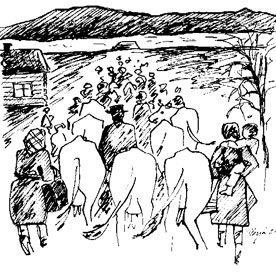
The history of Pekanpää
The sea, ice ages and almost
one thousand years of settlement
The core area of The Torne Valley medieval settlement was the Kainuunkylä region. In 1975, archeological excavations were carried out in the area. The Kannala excavation revealed that there had been settlement in the area almost one thousand years ago. The most valuable thing found in our mines is a rake. It proved that agriculture was practiced even back then. Excavations were also carried out on Lassheikin pahta in Poikkilahti. Researchers believe that the rocks in the area were ancient "Judge seats". During the prehistoric period, the Torne Valley was submerged under the sea. There were also several ice ages, which resulted in the formation of the Rousuvaara rocks.
Negotiations between the Emperor and the King
As the Finnish War came to an end in 1809 we were under Swedish rule. Negotiations over where the border line should be drawn lasted for a long time. The Swedish wanted the border to be the Kemijoki River while the Russian Emperor preferred the Kainuunjoki River. It is said that it was the Emperor's birthday and so he relented on his original demand. Thus a compromise was found and the Torne River became the border. We only escaped Russian rule when Finland gained independence in 1917. After that, the 30 cossacks in our village were given their marching orders.
The history we cover in our exhibitions
Also part of our history are displacement, the Lapland War, lumber rafting, salmon fishing, summer pastures and smuggling (known locally as "joppaus"). This drawing shows displaced people climbing onto a raft which they will use to cross the Torne River. In the background you can see the Swedish coast and fells.